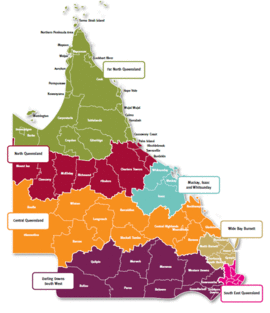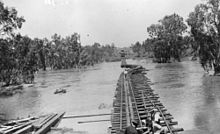
The Shire of Burdekin is a local government area located in North Queensland, Australia in the Dry Tropics region. The district is located between Townsville and Bowen in the delta of the Burdekin River.
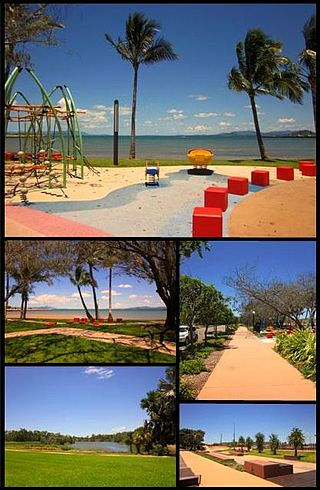
Bowen is a coastal town and locality in the Whitsunday Region, Queensland, Australia. In the 2016 census, the locality of Bowen had a population of 10,377 people.
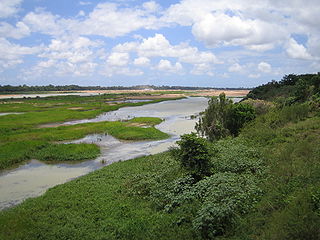
The Burdekin River is a river in North and Far North Queensland, Australia. The river rises on the northern slopes of Boulder Mountain at Valley of Lagoons, part of the western slope of the Seaview Range, and flows into the Coral Sea at Upstart Bay over 200 kilometres (124 mi) to the southeast of the source, with a catchment area of approximately 130,000 square kilometres (50,000 sq mi). The Burdekin River is Australia's largest river by (peak) discharge volume.

The City of Thuringowa was a city and local government area in North Queensland, Australia covering the northern and western parts of what is now Townsville. The suburb of Thuringowa Central is the main business centre in this area.

Ayr is a rural town and locality in the Shire of Burdekin, Queensland, Australia. It is the centre of a sugarcane-growing region and the administrative centre for the Burdekin Shire Council. In the 2016 census, the locality of Ayr had a population of 8,738 people.
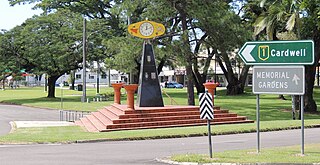
Ingham is a rural town and locality in the Shire of Hinchinbrook, Queensland, Australia. It is named after William Bairstow Ingham and is the administrative centre for the Shire of Hinchinbrook.
The Foley Shield is a rugby league competition in North Queensland administered by the Queensland Rugby League.

The North Coast railway line (NCL) is a 1,681-kilometre (1,045 mi) 1067 mm gauge railway line in Queensland, Australia. It commences at Roma Street station, Brisbane, and largely parallels the Queensland coast to Cairns in Far North Queensland. The line is electrified between Brisbane and Rockhampton. Along the way, the 1680 km railway passes through the numerous towns and cities of eastern Queensland including Nambour, Bundaberg, Gladstone, Rockhampton, Mackay and Townsville. The line though the centre of Rockhampton runs down the middle of Denison Street.

The Regions of Queensland refer to the geographic areas of the Australian state of Queensland. Due to its large size and decentralised population, the state is often divided into regions for statistical and administrative purposes. Each region varies somewhat in terms of its economy, population, climate, geography, flora and fauna. Cultural and official perceptions and definitions of the various regions differ somewhat depending on the government agency or popular group by which they are being applied.

Home Hill is a rural town and locality in the Shire of Burdekin, Queensland, Australia. In the 2016 census, the locality of Home Hill had a population of 2,954 people.
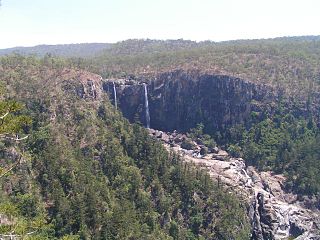
The Herbert River is a river in Far North Queensland, Australia. The southernmost of Queensland's wet tropics river systems, it was named in 1864 by George Elphinstone Dalrymple explorer, after Robert George Wyndham Herbert, the first Premier of Queensland.
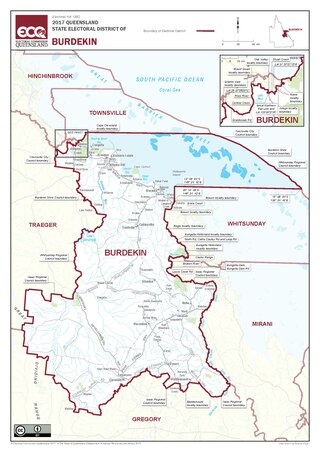
Burdekin is an electoral district in the Legislative Assembly of Queensland in the state of Queensland, Australia. Centred on the Ayr–Home Hill region, the electorate also includes some of Townsville's southern semi-rural localities as well as the coal-mining towns of Collinsville, Moranbah and Clermont. The Burdekin River flows through part of the electorate.

The Diocese of Townsville is a Latin Church ecclesiastical jurisdiction or diocese of the Catholic Church in Australia. It is a suffragan in the ecclesiastical province of the metropolitan Archdiocese of Brisbane. Erected in 1930, the Diocese of Townsville covers North Queensland. It was assembled from territory separated from the Diocese of Rockhampton.
Warrgamay is an extinct Australian Aboriginal language of northeast Queensland. It was closely related to Dyirbal.
North Coast Line (NCL) opening dates chronologically

Burdekin Shire Council Chambers is a heritage-listed town hall at 145 Young Street, Ayr, Shire of Burdekin, Queensland, Australia. It was designed by Frederick Smith and built in 1937 by local builder AS Wight. It is also known as Ayr Shire Council Chambers. It was added to the Queensland Heritage Register on 13 October 1997.

The Gugu Badhun are an Aboriginal nation whose country is located in the Upper Burdekin region of northern Queensland. Gugu Badhun country is approximately 220 km northwest of Townsville and includes the small township of Greenvale as well as a number of pastoral stations. The most comprehensive and up-to-date description of the nation is found in the book Gugu Badhun: People of the Valley of Lagoons, published in 2017.
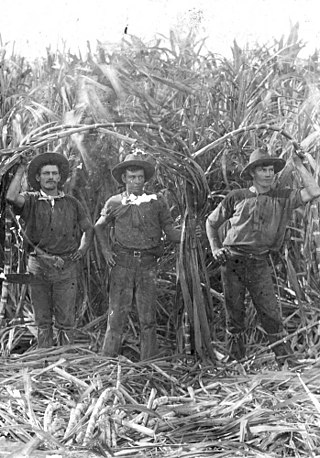
Jarvisfield is a coastal rural locality in the Shire of Burdekin, Queensland, Australia. In the 2016 census Jarvisfield had a population of 367 people.
The Juru people, also known as Yuru, are a group of Aboriginal people of the state of Queensland, Australia.
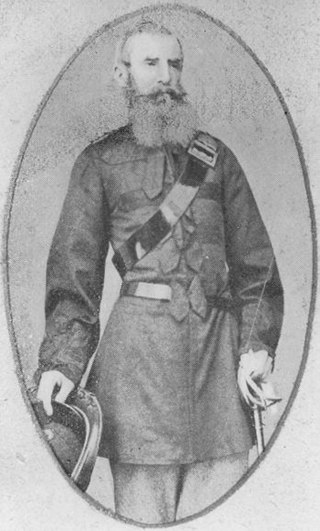
John By Durnford Marlow was an officer in the paramilitary Native Police force in the British colony of Queensland. He served in this corps for fourteen years and was stationed at frontier sites such as the Maranoa Region, Port Denison and on the Burdekin River. Marlow, by leading armed escorts of troopers, was also intrinsically involved in the expeditions which led to the establishment of the towns of Cardwell and Townsville.
